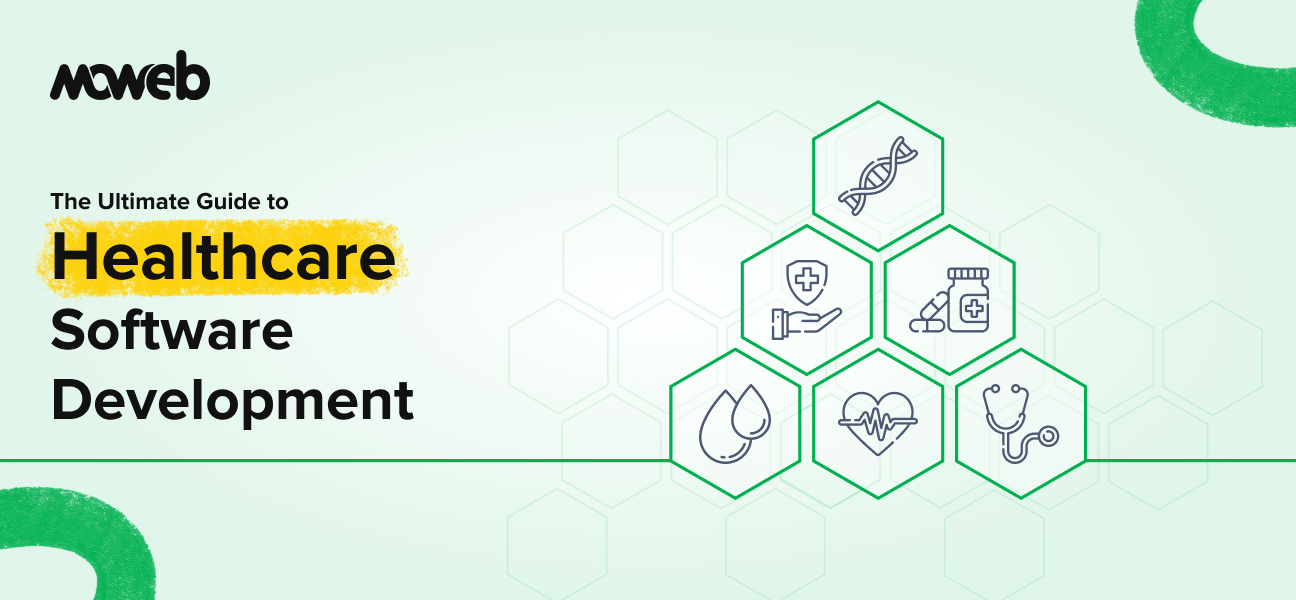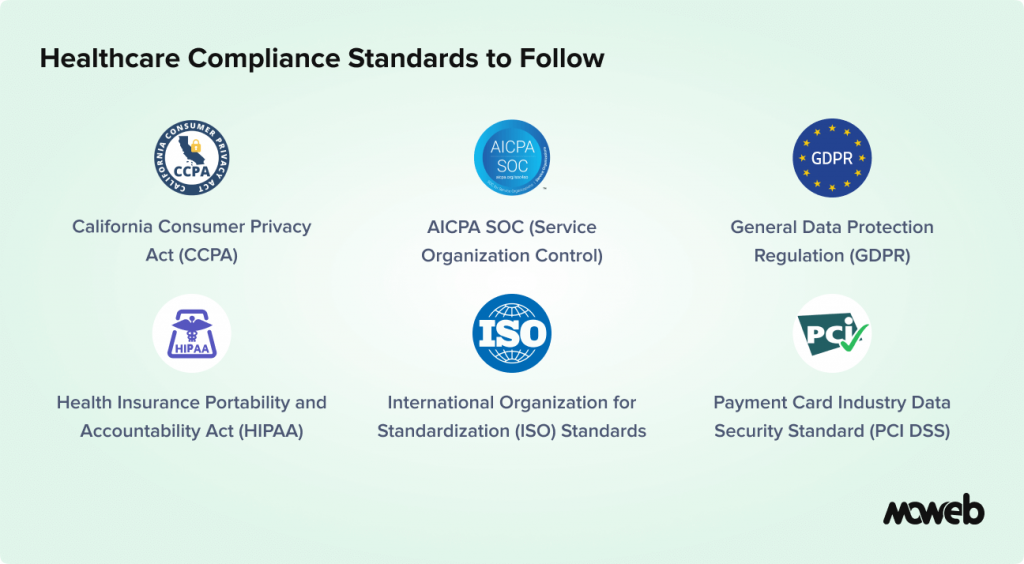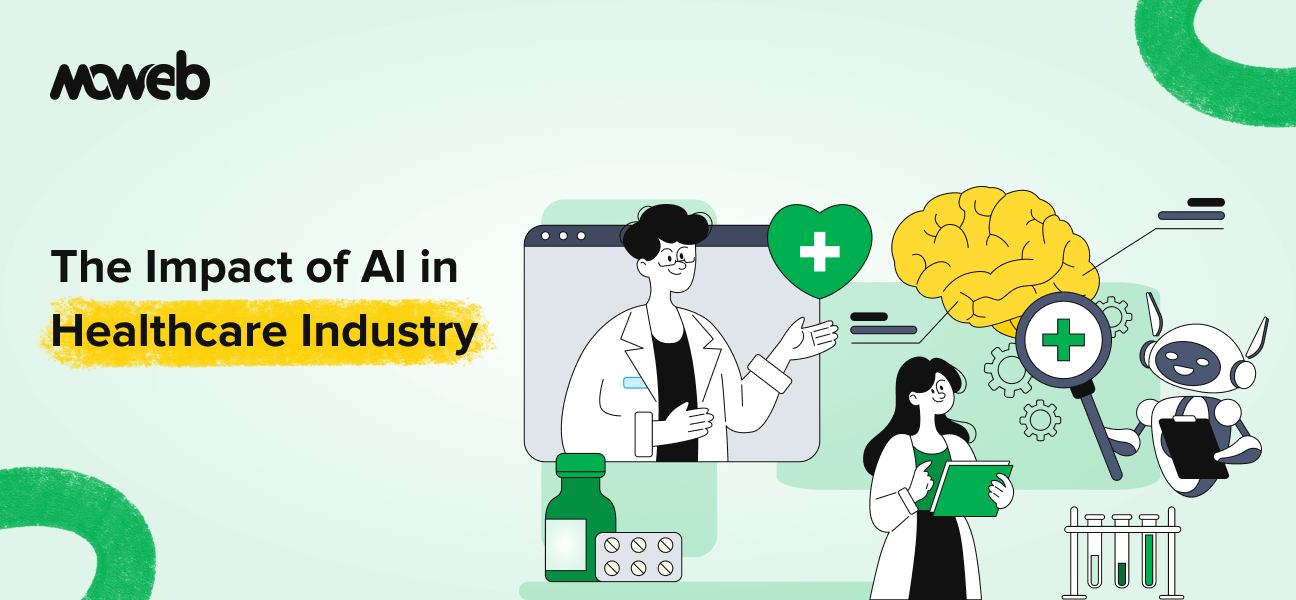
“In nothing do men more nearly approach the gods than in giving health to men.” – Cicero.
This famous quote by Cicero captures the virtues of the medical profession. With every diagnosis decoded and treatment offered by a medical practitioner, humanity takes a step closer to something divine. But even the noblest intentions need support. Especially when healthcare systems are stretched, and patient expectations are growing.
That’s where technology steps in as a quiet partner. AI-assisted diagnoses, virtual consultations, organized patient records, and smoother hospital workflows are now the norm. Not just ideas for the future. According to Deloitte, global healthcare spending is expected to cross $10 trillion by 2026. With this growth comes a serious challenge. It’s time for smart systems to lighten the load.
So, how to bridge care and efficiency without taking the mental toll? The answer is Healthcare software development. It’s the engine behind modern hospitals, enabling precision, automation, and proactive patient care.
What is Healthcare Software Development?
Let’s keep it simple. Healthcare software development is the process of designing, building, testing, and deploying digital tools that improve medical services and operations. This includes everything. From streamlining clinical workflows to managing health records in big numbers, and even supporting remote surgeries when needed.
The demand for custom healthcare software is growing fast – and for good reason. Healthcare solutions are never a one-size-fits-all. Each facility serves a different set of patients, and it must meet specific regulatory needs. While ready-made tools may cost less, they rarely deliver long-term value. That is why more organizations prefer custom healthcare software development for secure, scalable, and tailored solutions.
Types of Healthcare Software
Electronic Health Records (EHR) Systems
A centralized system that stores patient information. It aids in improving accuracy, access, and coordination across all departments.
Telemedicine and Virtual Care Platforms
A secure system designed to connect patients and doctors through video calls, chat, and remote monitoring tools. These platforms are essential in expanding access to care.
AI-Powered Diagnostic Tools
These much in trend tools use machine learning models to detect anomalies in scans or medical data. Such tools help in faster and accurate diagnoses, saving time in critical conditions.
Hospital Management Systems (HMS)
Comprehensively designed software to manage clinical, administrative, and financial tasks within a hospital setup. Supports seamless access and smoother, faster processes.
Mobile Health (mHealth) Apps
These apps enable smart tracking of your health while bringing everything to your pocket. From vital checks to medication alerts and wellness coaching, mHealth is redefining patient engagement.
Medical Billing Software
This one reduces administrative overhead while simplifying financial transactions, billing cycles, medical claims processing, and insurance verification.
Clinical Decision Support Systems (CDSS)
These systems assist healthcare professionals in making data-driven decisions using historical data, guidelines, and predictive algorithms.


Ready to Build the Future of Care? Reach Out to Moweb for Tailored Healthcare Solutons
Let’s TalkCore Features of Modern Healthcare Software
- Patient profile and record management
- Simple, clean user interface for both clinicians and patients
- Appointment booking systems with calendar sync
- e-Prescription generation for seamless pharmacy integration
- Billing and insurance workflows with claim tracking
- Secure video consultations and real-time messaging
- Role-based access control for data protection
- Advanced analytics dashboards for smarter decisions
The Healthcare Software Development Process
1. Research & Planning
The process begins with an in-depth understanding of how real people work in a real healthcare setup. This includes hospital workflows, patient behavior, and abiding by guidelines such as HIPAA, GDPR, and HL7. Planning with compliance in mind from day one helps avoid costly rework later.
2. Choosing the Right Tech Stack
The tech stack that you pick decides how the software will perform and scale. Healthcare developers often use secure languages like Python, Java, or .NET. The goal here is to choose a stack that ensures safety, speed, and long-term flexibility.
3. UI/UX Design
Healthcare interfaces must work well on all sorts of devices for all users, from tech-savvy staff to older patients. Clean visuals, easy navigation, and fewer steps help people use the system confidently. Good design improves both adoption and outcomes.
4. Development & Integration
This is where ideas turn into software. It’s also the stage where the system is linked to labs, EHRs, or wearable devices. Smooth integration allows information to move easily between systems without delays.
5. Data Security & Compliance
Protecting patient data is non-negotiable. Developers apply encryption, role-based access, and secure servers to meet HIPAA-compliant software development standards. This ensures data stays safe and private at all times.
6. Testing & Quality Assurance
Before launch, the software is thoroughly tested to find bugs, security risks, or user experience gaps. This step helps ensure that everything works well under pressure and meets healthcare standards.
7. Deployment & Maintenance
Once the software goes live, regular updates keep it in sync with new rules and user needs. Ongoing support ensures the system stays secure, helpful, and ready to adapt as healthcare evolves.


Looking to Build a Healthcare App That Checks All Boxes – Security, Scalability, and Empathy?
Let Moweb Build Smarter for YouKey Considerations for Successful Healthcare Software
Data Security & Privacy
Patient information is sensitive. Encrypting data, managing access, and keeping logs of who does what – all these are not extras; they’re essentials.
Interoperability
The software should easily connect with other systems like EHRs, lab software, or even older platforms. That makes daily operations smoother and reduces data entry mistakes.
Scalability
Whether it’s one clinic or many, the software should be able to grow. Choosing a cloud-based setup often makes this much easier.
User-Centric Design
If the software feels clunky, people won’t use it. Interfaces need to be simple and intuitive for busy doctors and patients of all ages.
Compliance with Healthcare Regulations
Every country has rules. HIPAA in the U.S., GDPR in Europe, NABH in India. Abiding them means protecting patients and avoiding legal issues.
Secure Messaging & Notifications
When doctors and patients get alerts or updates, those messages need to be private, fast, and reliable. That’s where encrypted messaging helps.
Challenges in Healthcare Software Development
1. Handling sensitive patient data without mistakes
Patient data is personal. Every detail needs to be protected. Security isn’t optional. It is the foundation. Even a small mistake can lead to serious consequences. Trust depends on how safely the system handles information.
2. Dealing with complicated healthcare regulations
Healthcare regulations like HIPAA and GDPR are strict. They affect how data is stored, shared, and used. The software must follow these rules from day one. Abiding compliance means staying careful at every step.
3. High upfront costs to build secure systems
Healthcare software needs strong security and reliable performance. That means higher development costs in the beginning. It’s an investment. Cutting corners can lead to bigger problems later.
4. Getting doctors and staff to use the software
If the software feels difficult, people won’t use it. Doctors are already under pressure. They need tools that save time and feel easy from day one. Good design can make a big difference.
5. Connecting with old systems already in use
Many hospitals still use older technology. New software must work with these systems. Data should move smoothly without loss. It takes skill to make everything fit together.
The Future of Healthcare Software
Artificial Intelligence & Machine Learning
Artificial Intelligence in healthcare is here to help doctors and medical teams do more in less time. It supports faster diagnoses and assists in clinical decisions. It also aids in managing hospital workflow so healthcare teams can focus on real care.
Internet of Medical Things (IoMT)
Smart devices like wearables are changing how we monitor health. They track vitals in real-time and alert doctors if something is off. This makes it a lot easier for both the patient and doctor to manage long-term conditions outside hospitals.
Blockchain in Healthcare
It is essential that patients’ medical records stay safe and accurate. That’s where blockchain technology allows secure sharing without tampering. It gives control to patients and builds trust in how their data is handled.
Big Data & Predictive Analytics
Hospitals or medical centres deal with huge volumes of data every day. With the right tools, this data can predict risks, spot abnormal patterns, and guide better decisions. It improves care planning and helps save time.
AR/VR in Healthcare
Augmented and virtual reality are not just limited to entertainment and are now being used for training and surgeries. They give doctors a better view and prepare them for real-life scenarios. Patients also benefit during therapy and recovery.
Personalized Medicine
Every human has a different body type and build. With the help of AI and genetics, treatments can now be matched to the individual. This reduces side effects and improves results. Data-driven tools can tailor treatments based on individual lifestyle and history.
Compliance Standards You Must Follow

| Regulation | Geography | Purpose |
| HIPAA | USA | Protect patient data and privacy |
| HL7 | Global | Standardize health data exchange |
| GDPR | Europe | Regulate personal data handling |
| PIPEDA | Canada | Privacy rules for healthcare providers |
| NABH | India | Quality standards for hospitals |
Key Technologies Used in Healthcare Software
- Cloud Computing for scalability and uptime
- AI & ML for faster diagnoses and automation
- Blockchain for secure recordkeeping
- IoT for real-time monitoring and alerts
- Big Data for smarter health analytics
Cost of Healthcare Software Development
Creating secure, reliable, and user-friendly healthcare software is not just an in-and-out tech job. It’s a strategic, thought-driven investment in patient care. But what exactly goes into the cost?
What Impacts Cost?
The total cost of developing healthcare software is influenced by numerous factors. More development time is frequently needed for complex features like multi-user portals, AI-powered diagnostics, and real-time monitoring. Data security, HIPAA-compliant software development, user-friendly UI/UX design, and integration with current systems are additional backend but essential features. The more customized the solution, the more preparation and accuracy are required.
In-house vs. Outsourcing
Hiring an in-house team may offer more control. But it also imposes higher costs due to recruitment, salaries, compliance management, and slower development speed. In contrast, outsourcing to experienced healthcare software development companies like Moweb provides a cost-effective, faster, and regulation-ready route. You get access to medical software developers, domain experts, and cross-functional teams, all without the overhead.
Budgeting Tips
Head start with an MVP (Minimum Viable Product). Focus on high impacting features first and then scale gradually based on user feedback. Always account for ongoing updates and compliance upgrades in your budget. Remember, great healthcare software isn’t built in a day. It evolves just like medicine does.


Innovation in Healthcare Begins With Strong Technology. Collaborate with Moweb your go-to AI & ML Development Company
Let’s Talk for Digital Health SolutionsConclusion
Smart, secure, and scalable healthcare software is essential for delivering modern and precision-driven medical care. It helps the hospitals work more efficiently, supports better clinical decisions, and ensures that patients feel supported every step of the way. When a digital system is thoughtfully built and aligned with real-world needs, healthcare software becomes a powerful ally – for doctors, for patients, and for the future of care itself.
FAQs
1. How is Artificial Intelligence changing the way healthcare software works?
AI brings in the much awaited intelligence that is faster, precise and systematic. It helps doctors and medical practitioners detect patterns in diagnostics analysis and work on personalized treatment plans. It even predicts health risks before symptoms show up.
2. Why is data security such a big deal in healthcare software?
Patient data is highly personal and needs confidentiality. A small breach can cause serious emotional, legal, and financial harm. That is the reason why secure healthcare software includes encryption, role-based feasible access, and full compliance with HIPAA, GDPR, and other global regulations.
3. What kinds of healthcare software solutions are commonly used?
There’s a wide variety of healthcare software out there. Each one is designed to solve a specific need.
- EHR systems – to store and manage patient records.
- Telemedicine platforms – for video consultations and remote care.
- Hospital management systems – to run daily operations smoothly.
- Billing and insurance software – to handle payments without errors.
- AI diagnostic tools – to assist in faster, more accurate diagnosis.
- mHealth apps – like fitness, period, or medication trackers.
- CDSS platforms – that guide doctors in choosing the right treatment.
4. How do compliance rules like HIPAA impact software design?
Regulations like HIPAA, GDPR, or NABH are not just mere checkboxes to be ticked. They guide how the entire system is designed. From how patient data is stored and who can access it, to making sure there are logs for every action taken.
5. How does good software directly improve patient outcomes?
When software works well, doctors spend less time on admin and more time with patients. It helps avoid errors, gives faster access to test results, and supports better communication. For patients, it often means fewer delays, more transparency, and care that feels more personal and informed.
6. Can we connect new software to our old hospital systems?
Yes, and that’s actually pretty common. Developers use APIs or other tools to link new software with older systems like EHRs or lab reports. It’s like upgrading your home without tearing down the foundation. Data keeps flowing, and your staff doesn’t need to relearn everything.
7. What services do healthcare software development companies like Moweb offer?
Moweb offers end-to-end product development and UI/UX design to API integration, compliance consulting, and post-launch maintenance. It also encapsulates complete healthcare digital transformation solutions.
Found this post insightful? Don’t forget to share it with your network!



